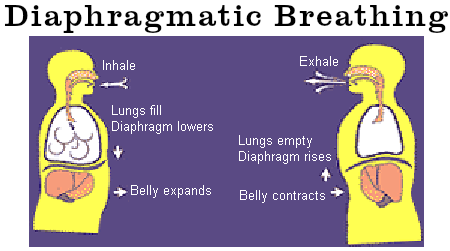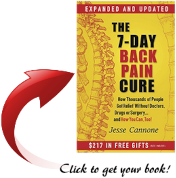On the last blog post, we discussed natural ways to get pain relief. One of the techniques was called diaphragmatic breathing. That breathing technique involves deep breathing, which results in a more relaxed state and less tension around the area of pain. And moreover, diaphragmatic breathing, also known as belly breathing or optimal breathing, appears to positively affect our immune system.

The Lymphatic System And Pain Relief
The importance of breathing correctly is well, pretty darn important! For one thing, the majority of us are not breathing correctly. In fact, we are shallow breathers. Bottom line, we’re not getting enough oxygen into our bodies. And that does not bode well for those who suffer from pain, such as neck or back pain. Why? Because the healing process is enhanced greatly with a good supply of oxygen. So if you’re not getting appropriate amounts of oxygen into your body due to the way you breathe, then your back pain, for example, will linger for a while. However, by using the technique of diaphragmatic breathing, you will learn to breathe more optimally, pumping oxygen rich blood into your body.
Diaphragmatic breathing positively affects the lympathic system. That’s significant. Why? Because the lymphatic system works hand-in-hand with the healing process of your body. When you suffer from pain, such as back pain, that area in your body is experiencing inflammation. As that area of pain begins to heal, the body must eliminate the waste and by-products produced by the healing process. This is where an effective lympathic system comes to the rescue, since its primary function is to eliminate waste and toxins from the body. But if the body cannot remove them efficiently, then the healing process will not be optimal, and you’ll probably still continue to suffer from pain.
What Others Are Saying About Diaphragmatic Breathing
Check out these articles …
http://www.haightpain.com/wrong-breathe/
http://sourcesofinsight.com/breathe-with-skill-to-dramatically-improve-your-health/
http://www.health.harvard.edu/newsletters/Harvard_Mental_Health_Letter/2009/May/Take-a-deep-breath
https://www.nmu.edu/wellness/sites/DrupalWellness/files/UserFiles/9.19_final.pdf
How To Breathe To Positively Effect Pain Relief
Here are the steps for diaphragmatic breathing. Remember to take slow and deep breaths.
- Maintain a good posture while standing or lying down. Make sure you’re relaxed.
- Focus on your breathing. Put one hand on your chest, and the other hand on your stomach. Insure that your stomach is expanding as you breathe in. If that is not the case, then you are not breathing optimally.
- Put both hands on your stomach, take a slow but deep breath through your nose. Focus on breathing into your belly.
- Again, take a deep breath through your nose and into your belly. This time, your stomach should rise with minimal movement from your chest.
- Breathe out through your mouth, and feel your stomach contract as you continue to exhale.
- Relax as you focus on the sound and feeling of long, slow, deep breaths.
- The recommendation is to do 10 of these deep breathing exercises, 3 times a day.
- Follow a 1:4:2 pattern. That is, if it took you 3 seconds to inhale, then take 12 seconds to hold your breath, and finally take 6 seconds to exhale.
<<<<<<<<<<<<<<<>>>>>>>>>>>>>>>
It’s interesting to note that when it comes to clinical studies involving the benefits of diaphragmatic breathing, it’s not that wide spread or easy to find on the web. Hate to be cynical about it, but is this due to the fact that breathing is free, and you just can’t put a patent on it? Put it another way, there’s no money in it? Bottom line, this type of breathing technique appears to reap positive rewards when it comes to fortifying your immune system and healing process.




